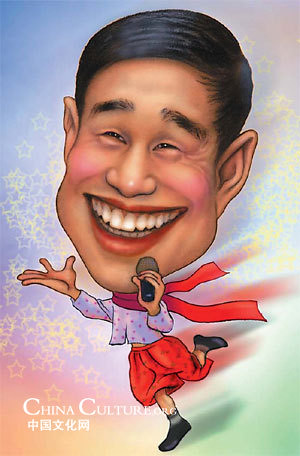| Home > China Feature |
The Martial Aspects
The power of the kung fu practitioner lay in his ability to defend himself against impossible odds and situations. After years of the most diligent practice, these monks became more than merely adept at the ways of survival. But the initial acceptance to be one of the chosen few was difficult.
As children, applicants for priesthood were made to do the most menial and difficult work related to the upkeep of the temple. Their sincerity and ability to keep the secrets of the order were severely tested for years before the finer aspects of the order were revealed to them. But, upon being accepted by the elders of the temple, his or her entry into kung fu was to open a whole new world. The student would work long hours training mind and body to work together in a coordinated effort. He would learn the principles of combat, the way of the Tao, and together they would ensure his way to peace.
One would be taught initially the first basic fist sets, the prearranged forms which simulated multiple attacks. These in turn became more complex as the student advanced, while he would simultaneously be learning the way of Taoism.
Upon completion of the student stage, one became a disciple who would be taught the higher secrets of the arts and philosophies. Weapons of all descriptions would become familiar to him as weapons of attack and defense. One would perfect his movements to coincide with his breathing. One's mind would meld into the realm of meditation known as mindlessness. And one would learn to harness ch'i.
Ch'i is a concept of such magnitude that we shall deal with it throughout this site in many different lights. For now, suffice it to say that ch'i is the power governing the universal power, so to speak. Only by harnessing such energy can a person of mild stature learn to break bricks with his bare hand, or learn to sense the movements of an opponent in the darkness. The list of feats goes on and on; we shall discuss some of these in other sections of this site.
Essential to movements in kung fu are ch'i-controlled actions. Compare the movements of a Karateka and a kung fu practitioner, and the differences are at once obvious. The Karateka moves deliberately, forcefully, each move unique and distinct from each other move. He punches linearly, kicks in a straight line, and keeps his body as rigid as iron. The Chinese boxer, on the other hand, is smooth and fluid in motion, allowing several moves to meld imperceptibly into one long, graceful action. In short, kung fu is fluid.
Ch'i properly coordinated allows for fluidity. Consider a single drop of water. Alone, it is harmless, gentle, and powerless. But what on earth can withstand the force of a tsunami? The concept of ch'i is the same. By tapping into the universal energies, one increases one's abilities many times. How can one damage a kung fu practitioner, when one is unable to strike and injure a body of water?
Art
 more
moreChinese Traditional Art---- Paper...
Papercuts refer to handicrafts made by cuttingpaperwith sci...
Funny...ha-ha or peculiar?
Every culture has its own sense of humor. That's why Jim...

Let your fingers do
In Peking Opera, finger movements express different emotion...

Custom
 more
more



 print
print  email
email  Favorite
Favorite  Transtlate
Transtlate 
